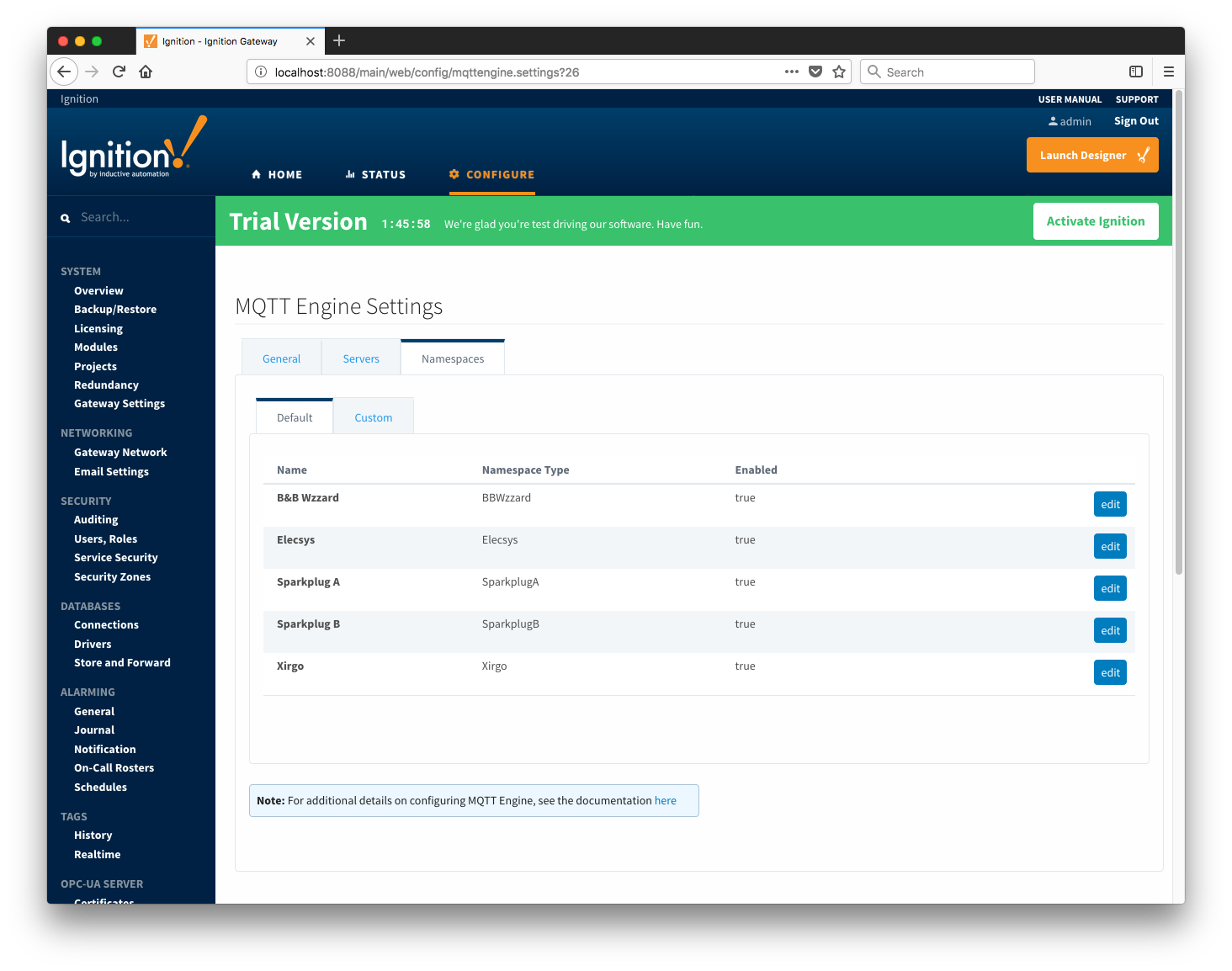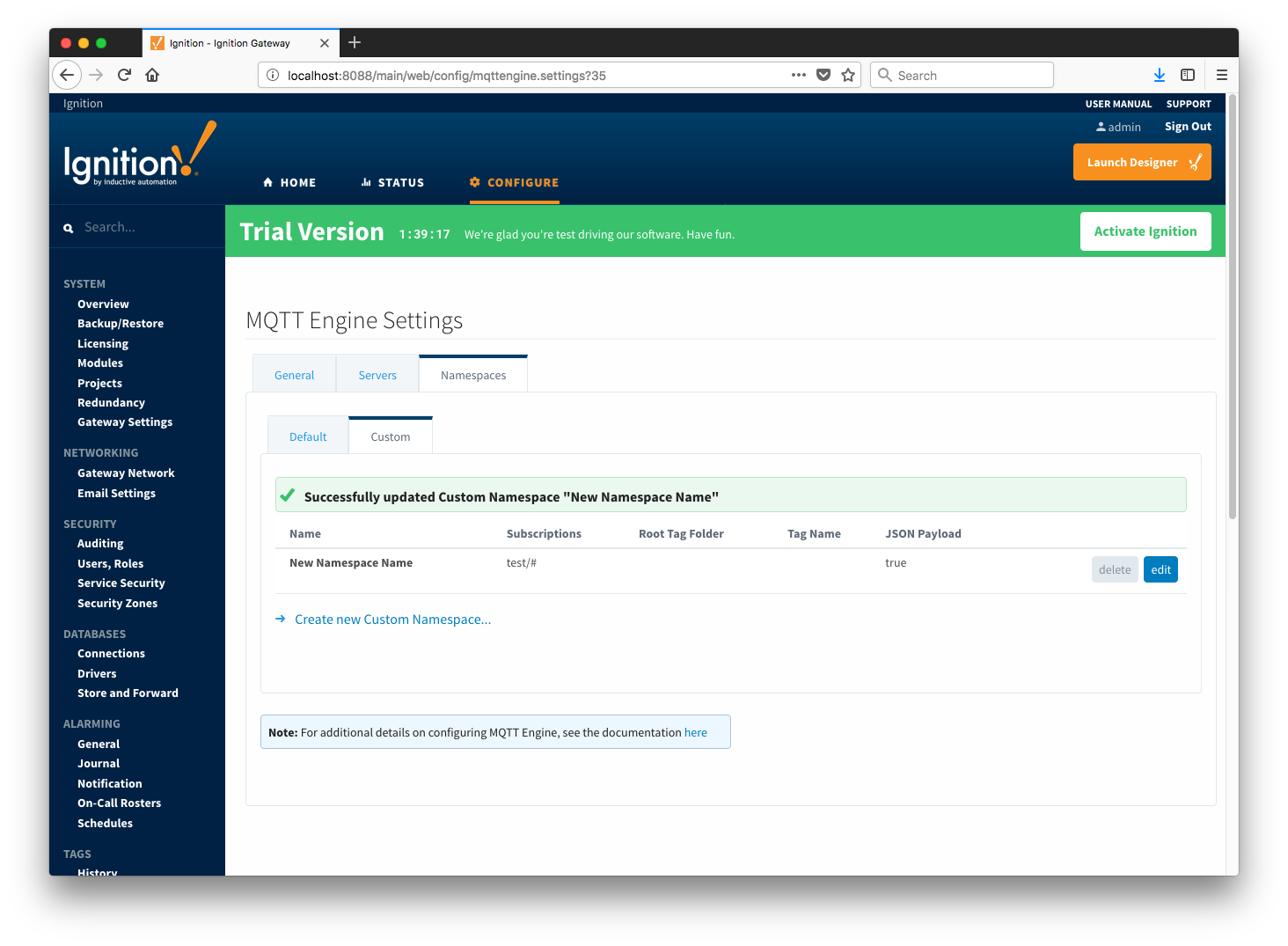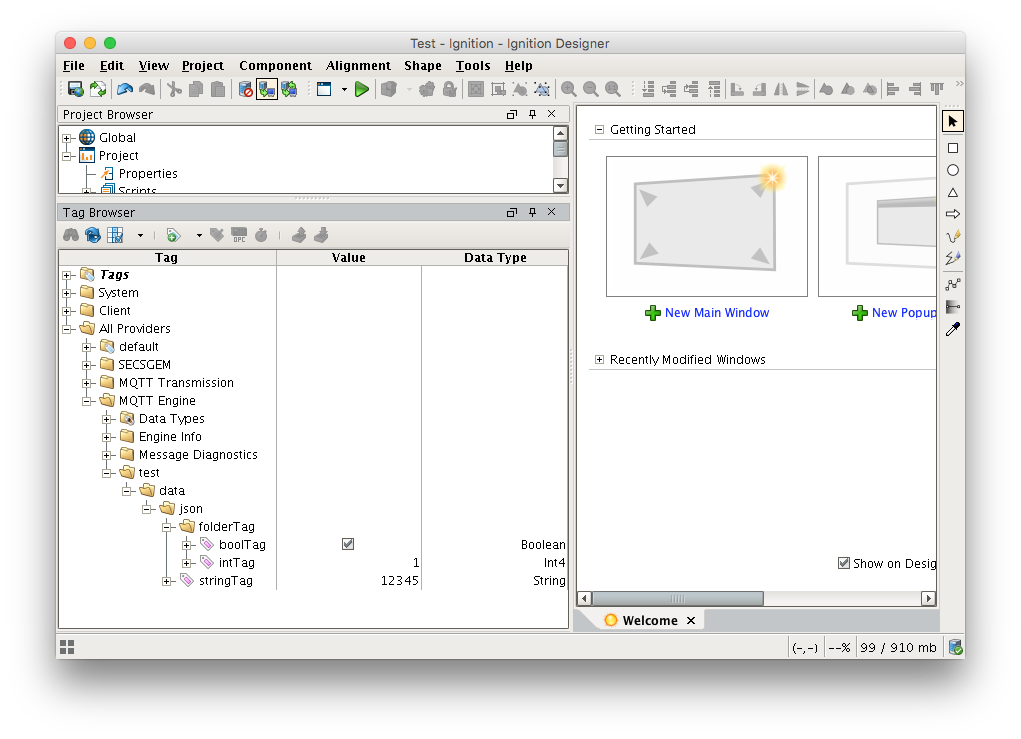...
- Name
- This is the friendly name of the MQTT Server used to easily identify it.
- Enabled
- Whether or not connections to this MQTT Server are enabled.
- URL
- This is the URL of the MQTT server. Its format is as follows: [protocol]://[location]:[port]. Each of these are shown below.
- protocol - Either tcp or ssl
- location - The server location. e.g. localhost, myserver.chariot.io, mydomain.com, etc
- port - The port the MQTT Server is listening on. Generally this is 1883 if using TCP or 8883 if using SSL
- Server Type
- This is the type of MQTT Server to connect to.
- Chariot - If connecting to a Cirrus Link Chariot on-premise or Chariot cloud based MQTT Server
- MQTT Distributor - If connecting to a Ignition MQTT Distributor server
- Third Party - If connecting to a third party 3.1.1 compliant MQTT Server
- Username
- Optional MQTT username to use in the MQTT connect packet. This is required if the MQTT Server to connect to requires it.
- Password
- Optional MQTT password to use in the MQTT connect packet. This is required if the MQTT Server to connect to requires it.
TLS Settings
- Certificates
- The server certificates to use if required. These are generally only required when connecting using TLS and the MQTT server does not have a genuine certificate issued by a trusted certificate authority.
- CA certificate must always end in 'ca.pem'
- If using client side certificates (i.e. a public/private keypair and CA cert), make sure the following naming conventions are followed.
- Edge/Device certificate must end in 'cert.pem'
- Edge/Device private key must end in 'private.key'
- Password
- A password associated with the certificate's private key.
Advanced Settings
- Client ID
- Optional MQTT client ID to use. If specified this will be used in the MQTT Engine connect packet when connecting to the server. If left blank, a random client ID will be create of the form 'IgnitionTarget-xxxxxxxx-xxxx-xxxx'.
- Keep Alive
- The MQTT client keep alive time (in seconds).
- Filtered Namespaces
- A comma separated list of namespaces that will be filtered/disabled for connections to this MQTT Server.
...
If a namespace is enabled, MQTT Engine will subscribe to the topics necessary to provide support for devices and data associated with that namespace. If a namespace is disabled, MQTT Engine will unsubscribe from those topics and no longer support the devices and data associated with that namespace.
 Image Modified
Image Modified
| Anchor |
|---|
| Custom Namespaces |
|---|
| Custom Namespaces |
|---|
|
Custom NamespacesCustom namespaces are used to provide support for generic MQTT messages with string based payloads. If a custom namespace is configured MQTT Engine will convert all messages received to tags. The topic of each message will directly translate into the tag's path. The payload of the message will be that tag's value.
...
When the 2nd publish is received it will overwrite the first tag because "two" is now a folder instead of a tag. This folder/tag name collision can be avoided by specifying the Tag Name to always use for tags.
Custom Namespace JSON Example
Let say we have a publish received on the topic "test/data/json" with value '{ "stringTag" : "12345", "folderTag" : { "intTag" : 1, "boolTag" : true } }'. MQTT Engine will create a three folders "test", "data" and "point" followed by a tag/folder structure representing the JSON value of the payload.


![]()
![]()
![]()
![]()
![]()
![]()
![]()